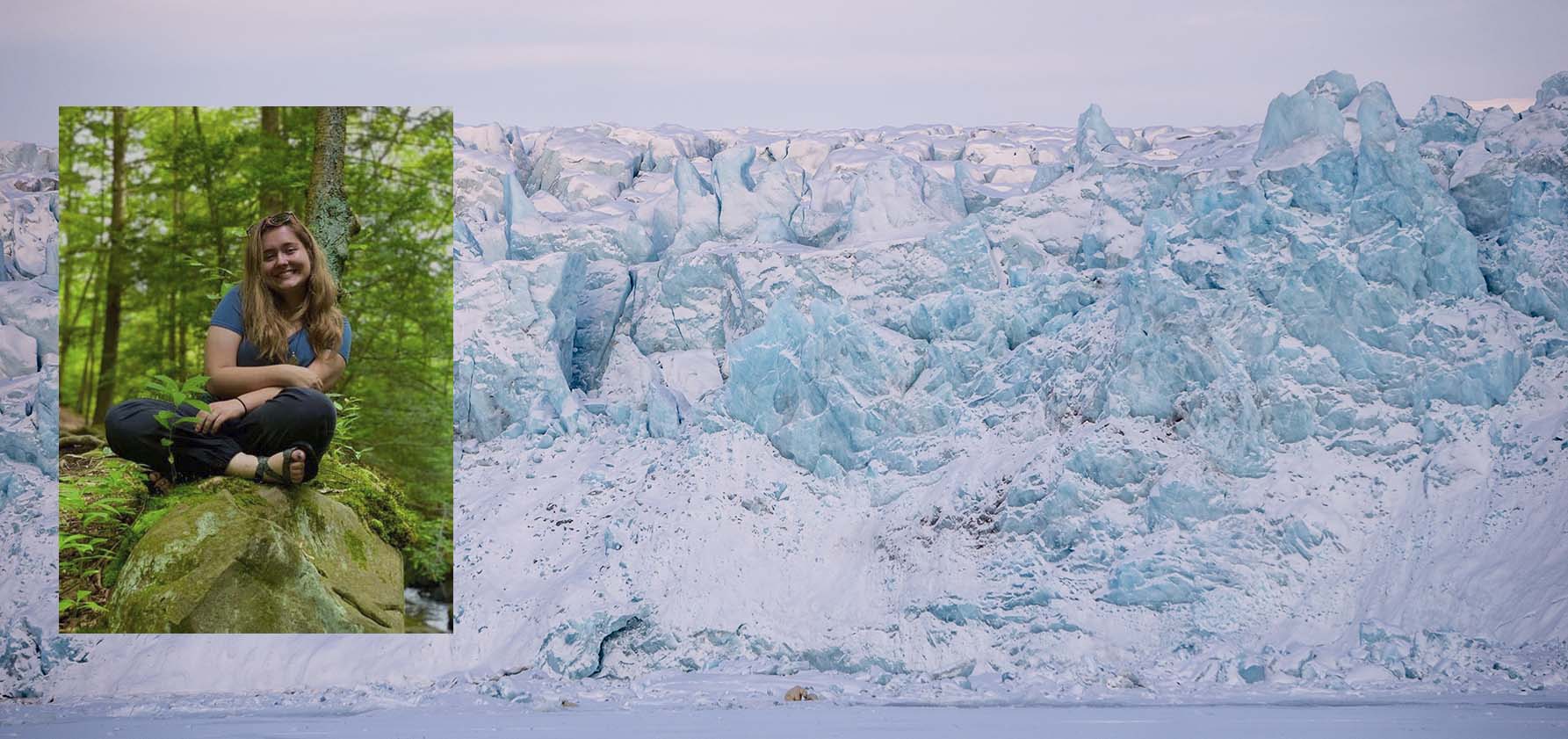
Environmental science major Chelsea Hill ’21 has had a passion for geology ever since she was 16 and spent a summer working as a tour guide at Lost River Caverns in Hellertown, Pennsylvania. Eager to pursue an independent study in geology during her final semester, she reached out across the ocean renowned glaciologist Heïdi Sevestre to ask if she would serve as a mentor for the project.
Sevestre gave a lecture in a course that Hill was taking ate last fall. The presentation Hill’s curiosity about glaciology. “I had questions about mountain building events in Antarctica,” says Hill, “and I contacted Sevestre. We stayed in touch, and she would send articles about Antarctica and the Arctic.” When Hill inquired about working together for Hill’s independent study, the answer was a resounding yes.
Over this spring semester, Sevestre has been mentoring Hill first from France and then from Svalbard, an archipelago that lies halfway between Norway and the North Pole. They met every week for an hour over Zoom to review the work and discuss next steps in the research.

Hill is mapping the geomorphological changes of the glacier Gandbreen in Svalbard (see the photo below, right). “Very little research has been done on this glacier,” says Hill. Specifically, Hill is looking at the history of surging events on the glacier. “Surging events occur sporadically and are caused when there is excess meltwater under the glacier, which significantly speeds up the movement of the glacier, causing crevassing [fracturing] of the ice.” Scientists speculate that surging events may be occurring more frequently as a result of climate change and that they may be a factor in sea level rise.
To map these surging events, Hill employed GIS mapping technology, learned in a Moravian course, and used data from aerial photographs and satellite images of the Gandbreen glacier. She presented her paper, “Evidence of Previous Surging Events – Gandbreen, Edgeøya, Svalbard, Norway: A Geomorphological Analysis” at the international Youth Environmental Alliance in Higher Education conference on April 21, 2021.
“This was my first take into glaciology and GIS mapping,” says Hill. “Being introduced to the field of glaciology was awesome and working with such a renowned scientist was an amazing opportunity. Dr. Sevestre is so passionate about her research and that fueled my own passion for this field.”
Hill will be submitting applications this fall for graduate school to continue her work in glaciology and has already caught the attention of a professor impressed with her research.
“This is a great model for Moravian College to expand student opportunities and to have “visiting scientists” collaborate with the college in exciting new ways,” says Diane Husic, dean of the school of natural and health sciences. “It is also an innovative way to bring global perspectives into our students’ experiences.”